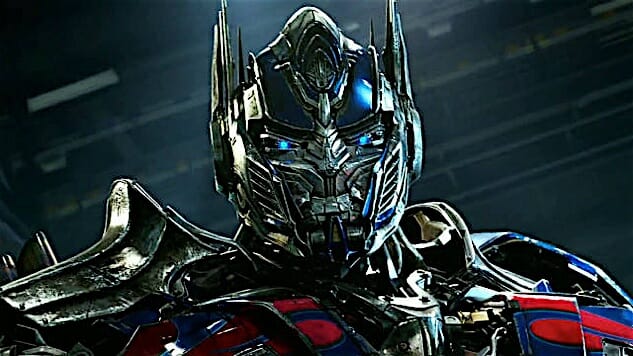Zombie Franchises: Transformers
Till all are sedated

I’m not one of the ’80s kids who is here with starry eyes to tell you that I wish Optimus Prime was my uncle. My parents bought me roughly a whole suburban finished basement worth of Transformers toys during my boyhood, but I don’t remember one single plot from the original television show despite having watched what I’m sure amounted to days of it. I don’t need to be a slavish devotee to be somewhat offended at what’s been done to the property, however.
That makes me sound like I’m blissfully unaware of the rapacious nature behind all of those bad ’80s cartoons, doesn’t it? I’m not, I swear. I’m sort of furious that one of my childhood diversions came about more or less because U.S. President Ronald Reagan, always a fount of great ideas, moved to essentially deregulate cartoon broadcasts, removing a bunch of rules that prevented children’s programming from being glorified toy commercials. All your Gobots, your Thundercats, your He-Men, your Brave Starrs and your Holograms, all were designed in the fervent hope that maybe somebody could start matching Kenner for Star Wars figurine sales.
For a recent reminder of this, check out my least favorite television producer’s 578th “vanity card.” That’s right, Chuck Lorre himself got his start, he tells us, as a hack scriptwriter churning out ’80s cartoons, something he professes ambivalence about.
“Rather than be educated and/or simply entertained, this very vulnerable audience could now be exploited for financial gain,” he writes in the vanity card that aired after Jan. 11, 2018’s episode of The Big Bang Theory. “Bad for kids, but good for me.”
I guess I have Ronnie and Mattel to thank for Two and a Half Men, too. Who knew Lorre and I agreed on literally anything? I am grateful for whichever scripts of his I almost certainly vegged out during, though, because despite my utter lack of appreciation for how these plastic-plugging distractions entered my young life, I do deeply appreciate a lot of things about how earnestly some of the artists and writers went about making it.
If you don’t believe me, look at some of the animation, voice work, and music on display in a clip from Transformers: The Movie (1986), where evil robot Leonard Nimoy (!) fights planet-sized evil robot George Orwell (!!!).
Some of the properties that came out of this deregulation were shoddily made pablum, but Transformers, whether beleaguered parents wanted to admit it or not, was actually pretty well-made pablum. The story—about exiled alien robots who carry out their war on Earth in an attempt to garner resources—bears little examination. The characters, on the other hand, are all memorable, even if you can’t always remember their names. Through voice, through personality, through expressive features, Optimus Prime and his Autobots and Megatron and his Decepticons left impressions on kids. Even a four-year-old knew that if you picked up a damn toy of Starscream, you affected his voice and did something vaguely traitorous.
For that reason and that reason only, I remember the exact moment in 2006 when I saw the trailer for 2007’s Transformers and read, with horror, the words “A Michael Bay film” over the title at the end. And I must hand it to Bay, because in all fairness, he has made this franchise his own in the most regrettable ways imaginable. I usually divide these articles into titled sections that highlight one particular aspect of the point I’m trying to make, and to give a sense of continuity. This being an examination of a Michael Bay property, the most instructive approach is not to do that at all.
-

-

-

-

-

-

-

-

-

-

-

-

-

-

-

-

-

-

-

-

-

-

-

-

-

-

-

-

-

-

-

-

-

-

-

-

-

-

-

-








































